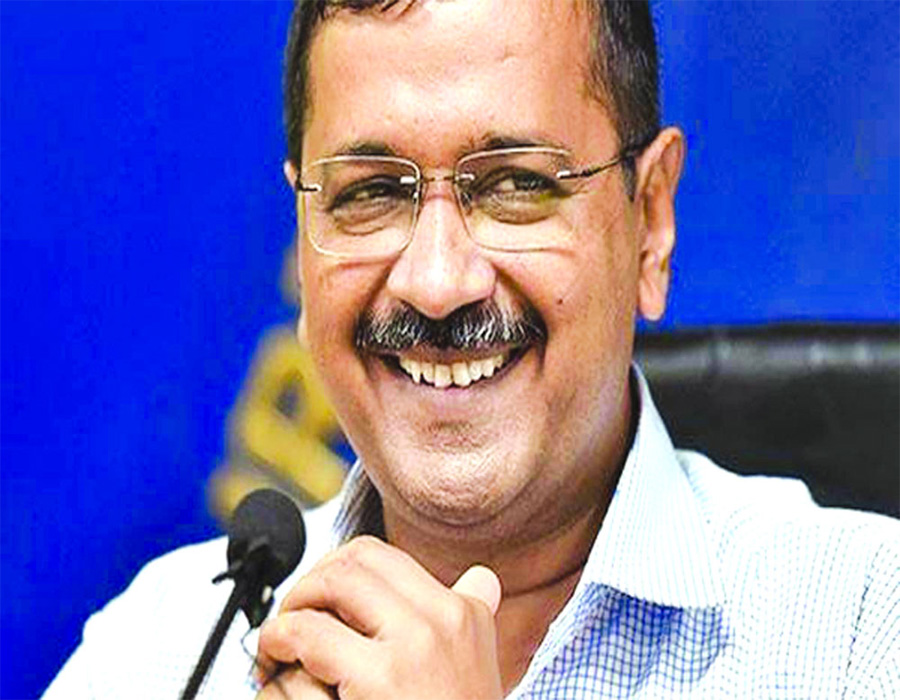Having established itself in Delhi creditably, the party is now planning to test the waters in UP Assembly elections
The Aam Aadmi Party (AAP), after initial hiccups in its ambitions to spread its wings nationwide, learnt the hard way that it had to first establish its political life’s longness with proof of its governance skills. This is why it abandoned its pan-India efforts, considering its limited appeal among the civil society, and concentrated on securing Delhi. And now that it is into its third term in the city-State, riding a massive verdict and having managed to stave off the BJP creditably, it is now considering spreading its footprint across the country. Of course, in this effort, it is following a ground-up policy, proving its credentials in local Government polls. Emboldened by the party’s maiden win in the Goa zila panchayat elections, its convener and Delhi Chief Minister Arvind Kejriwal has said that the AAP will contest the Uttar Pradesh (UP) Assembly elections in 2022. The Goa win is significant for the simple reason that although the BJP dominated the results, the Opposition Congress performed poorly and the AAP seemed to be gaining at the latter’s expense. Of course, the AAP is playing it big in UP by harping on its comparatively superior performance in citizen-friendly governance. In fact, Kejriwal almost launched a campaign yesterday, asking why people from UP would have to look at Delhi for health services and education in an obvious reference to his successful run with mohalla clinics, free electricity, water, education and healthcare facilities. It would enter the contest as an outlier, hoping to encash on the vacuum created by the Congress. But the question is whether it would be open to alliances to push up its tally and relevance. Already Samajwadi Party (SP) chief Akhilesh Yadav has said that his party would form an alliance with smaller parties. His reason: his experience has not been good with the bigger parties. The AAP is now also eyeing Punjab, where it has significant presence with 19 MLAs. It has already won 62 of the 70 seats in Delhi with a vote share of nearly 54 per cent, a few of them on Punjabi-dominated seats. And now it has thrown its lot with the farmers’ agitation, dominated as it is by agriculturists from Punjab, and even thrown barbs at Congress Chief Minister Capt Amarinder Singh for toning down his attack despite the initial fury. Of course, Singh has been at the forefront of the farmers’ agitation, passing amendment Bills to the three Central farm Acts in the Assembly, insisting on meeting the President and sending his legislators to Delhi to stage a dharna. He has been one of the leading Congress voices in articulating protests against the farm Acts.
However, the AAP hopes to make gains from the anti-incumbency factor against him and benefit from the erosion of the base of the Shiromani Akali Dal (SAD). Though the latter has now walked out of the National Democratic Alliance (NDA) over the farm laws, it has been too little a move to wrest control in the State. The AAP wants to use this disappointment with the SAD to its advantage. Kejriwal’s party, however, still has to work on its base in Punjab. It has to rebuild connect with the Malwa region — the epicentre of agrarian distress — which it has lost since 2014. The AAP has to take care of factionalism in the State unit, which has not been quite at peace with the central leadership. If the party is serious about pushing itself to the forefront, it has to work on consolidating a political base that’s different from the existing players who have been seen as championing the interests of the elite. This has alienated much of Punjab’s masses from the political class and the AAP wants to spearhead that change. The farmers’ protests are just the beginning. The question is can it wrest the alternative space?








 OpinionExpress.In
OpinionExpress.In















Comments (0)